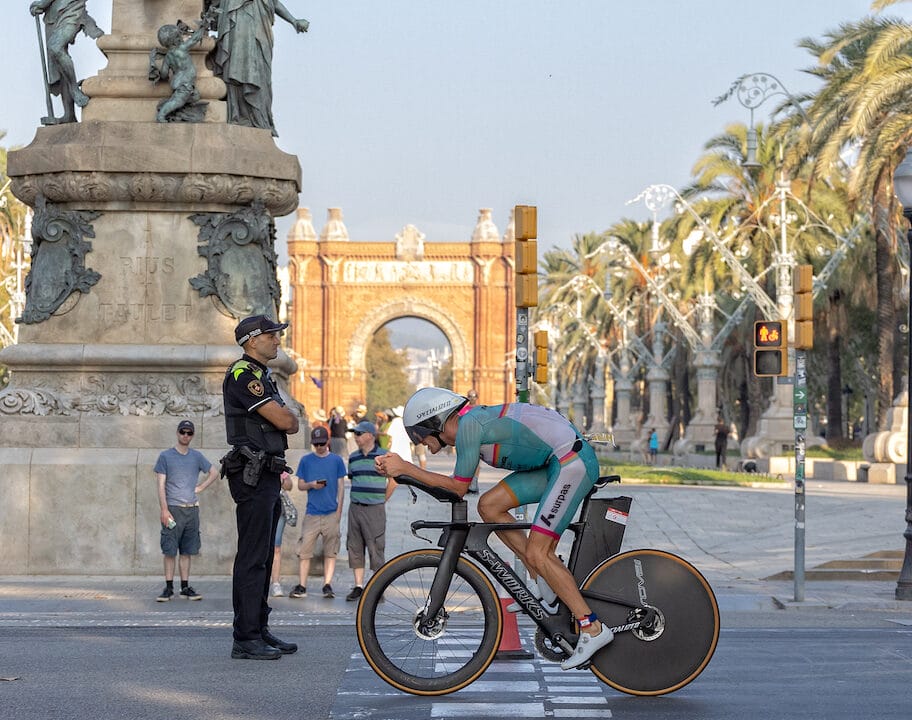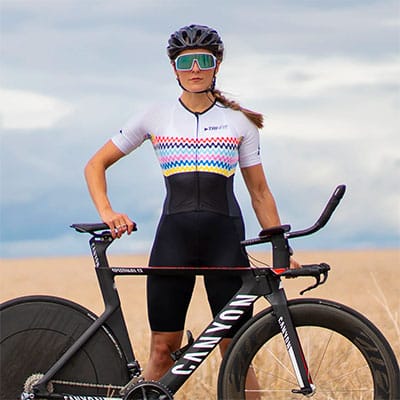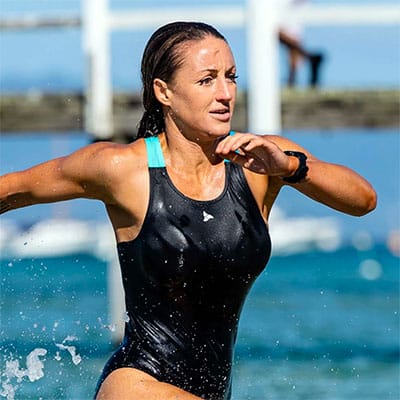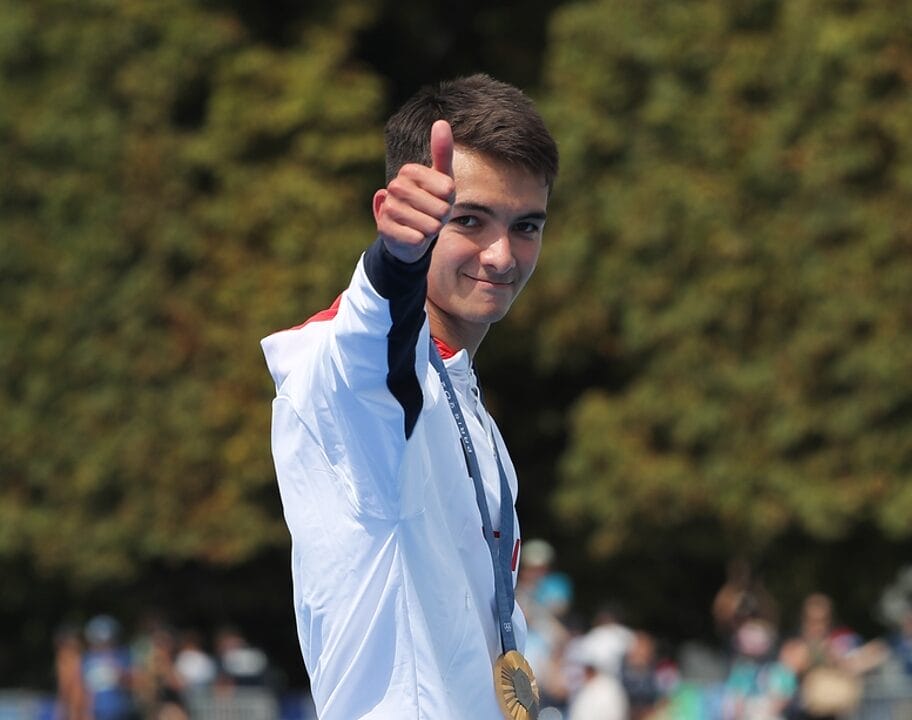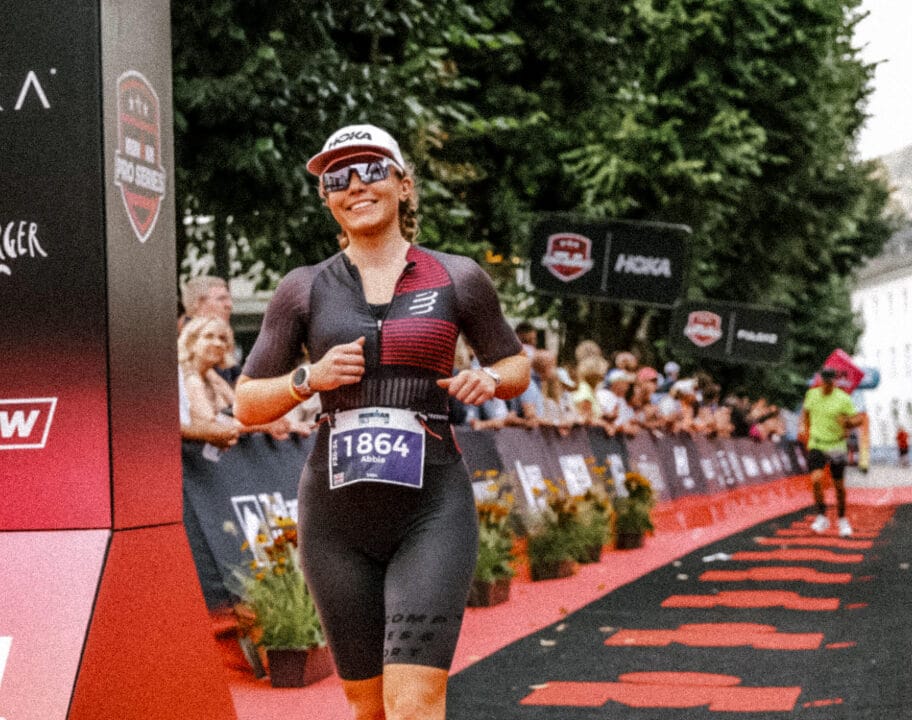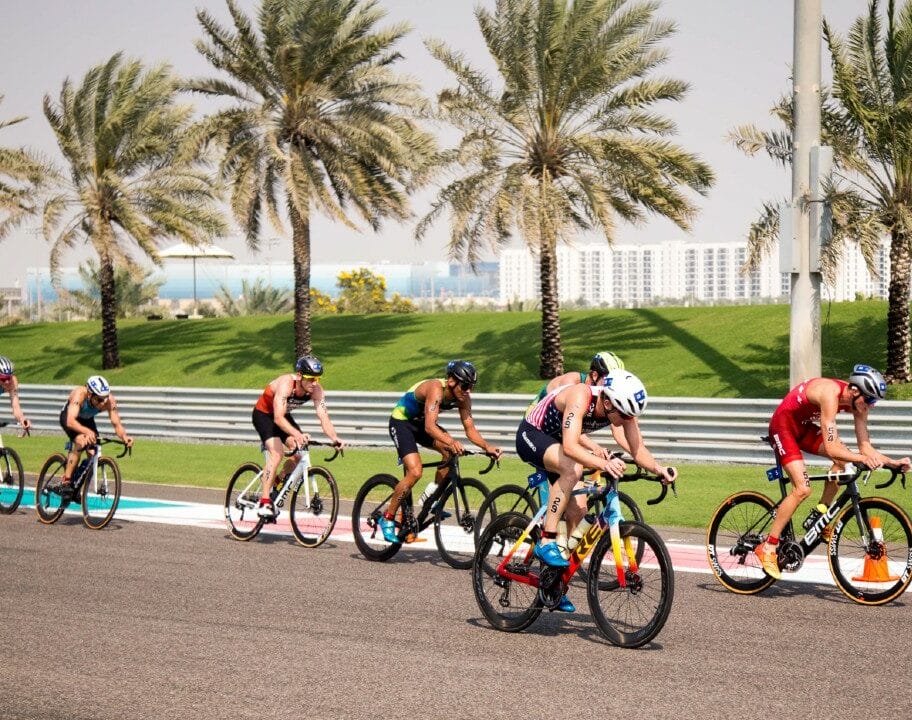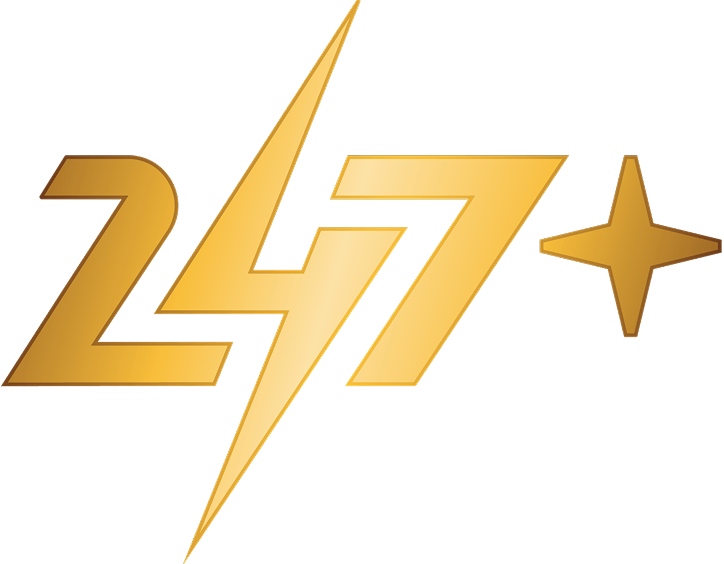‘Mondays With Mark Allen’ reflects on some super exciting news this week – that women’s triathlon is set for fully-fledged NCAA college status in the United States. Mark spoke to Tim Yount – the man leading the charge towards a bright new future.
Women’s triathlon competition in NCAA schools should be a reality within the next two years after the required 40 schools signed up for swim/bike/run programs.
The huge news comes after a 14-year battle by USA Triathlon to have the sport accepted by the biggest schools in America, and it could see the Olympic stars of the future coming through the NCAA system.
There are still legislative and budgetary steps to go through, but understandably Tim Yount – Chief Sport Development Officer at USA Triathlon – is overjoyed by the latest developments.
NCAA and triathlon – timeline
He told Mark: “It is a very very exciting time for us. The whole genesis of this really goes back to 2008 when two people at the USA Triathlon office had a conversation about ‘what can we do to continue to build draft-legal racing?’
“That was the years when it was sort of being questioned, do we want to do this as an organisation, do we not, would the athletes embrace it. We felt like we needed to.
“So we built the basis for all the things to do with marketing and promotions to get 10 letters from the NCAA in order to start the process. In 2013 we got legislative council support to be considered on the floor of the NCAA Convention in 2014 as an emerging sport – positioned to be a full fledged NCAA championship sport because of the nature of the sport and what it’s made of. The growth, the potential it has, all those kind of things.
“We built out a really good promotional plan. We were accepted almost overwhelmingly on the floor of the NCAA Convention. 94% of the athletic directors for Division 1, 2 and 3 supported the sport as an emerging sport.”
Once emerging sport status was granted, it would be a 10-year race against time to create the right structures for the sport to exist in NCAA competition, and have 40 schools sign up. There was no time to be lost said Yount.
“Once that was passed we started working hard and fast. We created the basic structure of the sport with rules, policies, bylaws. We looked at our championship schedule – how we were going to create championships around the events that we wanted to do.
“Then in 2017, I was managing with a leader in our office this whole process. And in 2017 she left. Our CEO at the time said: ‘Tim, I need you to take over the NCAA program, and start the recruitment process’.
“So in 2017 we started, and we worked like crazy to get to 40. So really our schedule of hard recruitment has been five years. And we had 10 years that we had to become fully fledged NCAA in order for them not to shut us down and say you’re no longer emerging, you’re no longer part of the growth pattern that we set up for a sport that could be some day NCAA.”
Tri heritage a key narrative
Triathlon of course is a sport which has been a trailblazer for equality in terms of opportunity and prize money. Yount says that heritage is something which played in its favour with leading schools.
“We used that a lot in our conversations with athletic directors. We talked about the history of our women’s side of the sport. We talked about our Olympians, we talked about our medallists. We talked about our success in World Cups and World Championships.
“Not that we ignored the men, but this is Title IX move by the NCAA – just happened to be the 50th anniversary of Title IX this year – the year that we actually hit 40. So it’s meshed into a really nice relationship with the NCAA. They respect what we do as a sport – they think we are a true pure sport, which we are. The women add to that.”
Now Yount and his colleagues, along with generations of American girls, can look ahead with huge excitement to what the future might hold.
“Think about it – As an 8, 9, 10-year-old, you get to think about NCAA triathlon. That never existed Mark when you were racing. It probably never crossed your mind that the friends you had who were female and racing the sport would ever think that they would have an opportunity.
“Now their kids might have that opportunity, or their kids’ kids could have that opportunity many years down the road to be able to do NCAA racing, to be an NCAA champion, to be seen on television on NCAA championship events that they would actually cover. That’s pretty cool.”
Educating the NCAA
Yount admitted that there was an important education process which took place with key NCAA administrators to have them understand the machinations of the sport.
“Part of what we talked about to athletic directors is they don’t know much about the sport. They think that we’re Ironman. There’s no way that is gonna fit into a 20-hour training week that we’re allowed to have according to NCAA rules.
“I said whoa whoa, timeout, we’re not talking about 18, 19-year-old females doing an Ironman. We’re talking about a sprint-distance triathlete going multiple loops – very exciting, high energy and all the other things that you could imagine.
“So we have quickly changed the narrative for a lot of these administrators. We do monthly or quarterly updates of them.
“Most of the athletic directors know that number one, our women have had great success in some very big events over our time as a sport – they know that we’re emerging, we’re moving fast, we’ve been aggressive with our pursuit of new institutions.
“And I think they also believe that the future is that triathlon’s Olympians of whatever 2-0-2028 – might be L.A. – it might be 2032 – could very well come through NCAA programs.”
Smells like team spirit
Team competition is relatively new for triathlon, but the success of the first ever Olympic Mixed Relay in Tokyo last summer highlighted its huge potential. Yount says that is another real positive in terms of the NCAA.
“The other thing we’re going to start seeing is a lot more amazing head-to-head matchups between institutions. So team structure, which is obviously a fairly new concept for our sport as well.
“Where the battles between Division 1 institutions will be really high, the battles between great Division 2 programs, the battles between great Division 3 programs will be really high. And that is a concept that these people really enjoy, because it mirrors a lot of what you see in high school sports, but know we’re going to see it at a collegiate level in our sport.”
Countdown to reality
Now of course the question from everybody is ‘when will we see this racing start?’. Yount is hopeful the process will be relatively swift.
“One of the things we’re doing right now is starting that process with the NCAA to say ‘What committees need to approve this? What legislative councils?’. We have an idea of which ones do.
“Then the NCAA has to get the budget – we think it’s going to be a fairly hefty budget to support the sport, to do great things for the sport.
“Our hope, this is our hope, is that we can do this in about 18 months. The reality is it could be 18-24 months depending on how quickly these committees and these groups can get together at their meetings and push this through.
“We’ve been very methodical, we’ve been very very clear with the NCAA about the steps that we’re taking so that when it came time to get approval, it wasn’t ‘Wow, I wonder if they’re doing this right, I wonder if they’re doing this very well’.
“They should know that we’re doing this right, they should know that we’re doing it very well. They should hopefully move us through that process much more quickly than a sport they know nothing about.”






